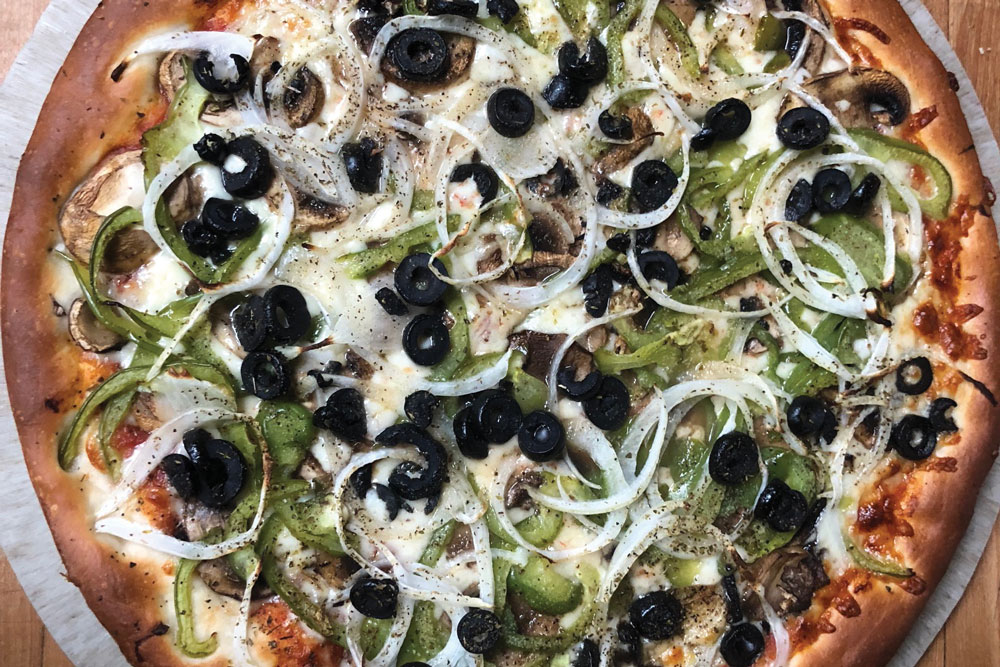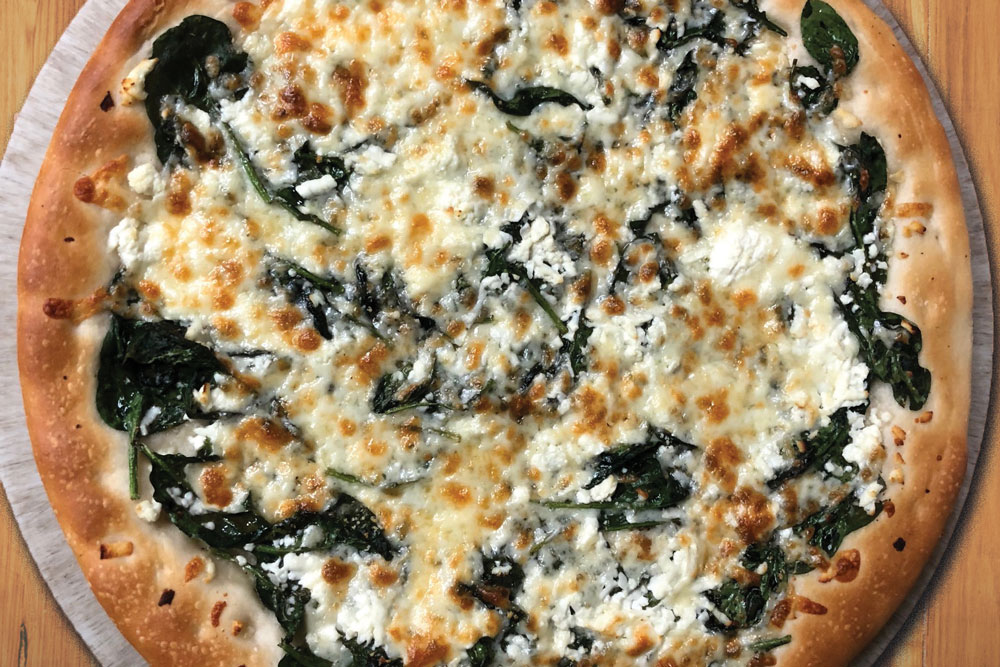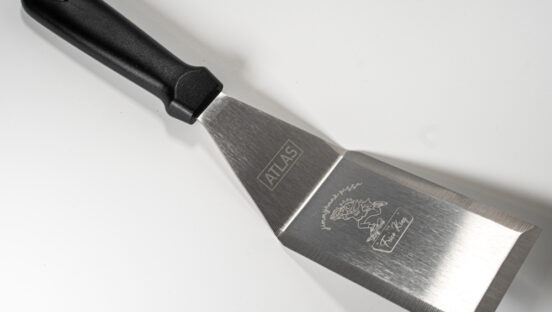- Greek immigrants integrated traditional foods, such as gyros and spanakopita, into the menus at their pizza houses and houses of pizza in the U.S.
- The basic Greek-style pizza starts with a no-knead dough and a sauce that’s heavy on tomato paste and oregano.
Related: Choosing the perfect pizza cheese
In Joel Denker’s book, The World On a Plate, which explores how immigrants have influenced American food over the years, Denker talks about how Greek immigrants were attracted to running delis, coffee shops, and eventually pizzerias when they arrived in New York and New England.
Denker explains that the Italians dominated the pizza trade in New England between the 1920s and 1950s, but when the Italian pizzeria owners in the area retired, their children wanted full-service restaurants, not pizzerias, which opened the door for the entrepreneurial Greeks to take over the abandoned pizzerias. By the late 1970s, 76% of Greek families living in Connecticut were in the pizza business.
And what did the Greeks overwhelmingly call their pizzerias? You guessed it—Pizza Houses and Houses of Pizza. Which is why we see so many of these establishments throughout the northeast today. Over the years, Greek owners integrated traditional foods, such as gyros and spanakopita, into the menus at their Houses of Pizza, which made it easy to differentiate the Greek pizzerias from the Italian ones.
 |
| Newton Corner House of Pizza |
What Makes Greek-Style Pizza Different?
Greek-style pizza is similar to St. Louis-style pizza in the way that most people either love it or hate it. Over the years, Greek-style pizza has earned a bad rap from those who label it as being too oily, too tangy, or too heavy on the seasonings. However, there are many long-standing Greek pizzerias with raving fans. A few fan favorites include Tilton House of Pizza in Tilton, New Hampshire; Family House of Pizza in Marlborough, Massachusetts; and Yanni’s Pizza Restaurant in Newington, Connecticut (OK, so not all Greek pizzerias are called Houses of Pizza).
Taso Dres, a first-generation Greek-American and owner of Newton Corner House of Pizza in Watertown, Massachusetts, says that there are several factors that set Greek pizza apart from other styles.
The basic Greek-style pizza starts with a no-knead dough (often with a pinch of sugar added) that’s left to proof overnight. The sauce is heavy on tomato paste and oregano. And most Greek pizza is topped with a 50/50 mix of mozzarella and white cheddar (some also add a bit of provolone). Pizzas are baked at around 500˚ in thick, round, well-oiled pans (most pizza makers use olive oil, but others speculate that Crisco may be used to ensure that signature Greek pizza crunch). Toppings range from cheese only to veggie and meat lovers. Typically, this style of pizza tastes best when it sticks to its Mediterranean roots and keeps the toppings light.
Marketing Greek-Style Pizza
Winter is a fun time to market a Greek-style pizza, since eating one in the right environment can conjure up thoughts of vacationing in a far-off land.
- Create Greek-style flyers and marketing materials to announce a Greek-style pizza and Greek wine pairing event on the patio of your pizzeria. Set each table with olives, feta, olive oil and bread to set the mood.
- Invite a speaker in from the local university or high school to discuss Greek history and how it relates to pizza. Of course, serve pizza afterward!
- Host a cooking class covering how to make Greek-style pizza. Greek-style pizza is one of the easier styles to make at home, since it can be made using bread flour and a cast-iron skillet.
Liz Barrett Foster is the author of Pizza: A Slice of American History.













